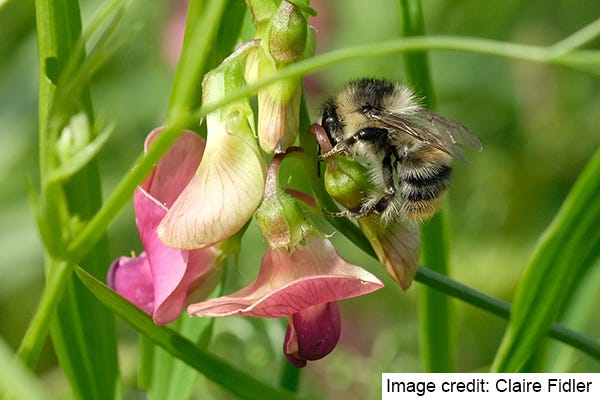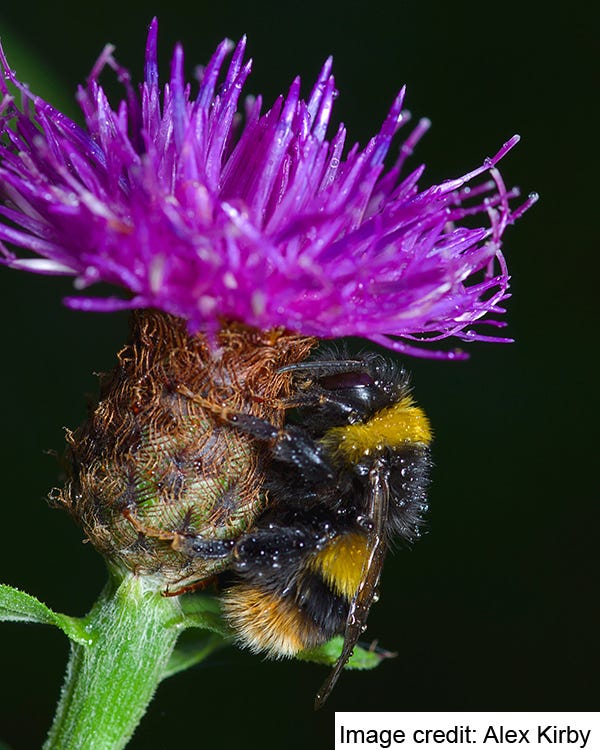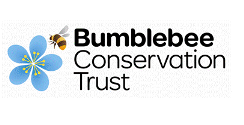
There are 24 species of bumblebee in the UK, representing approximately 10% of the world’s bumblebee species. However, in the last 100 years, 3 species have become extinct and 8 are in serious decline. One of our rarest bumblebees, the Shrill carder bee, is now restricted to only five known areas in Britain - including Somerset, where our friends at Cosyfeet are based. These declines are mainly due to the loss of 97% of lowland wildflower meadows to intensive agriculture and urban development since the 1930’s.
We can ‘bee the change’
Here are some small actions you can do to help us save the sound of summer:
- Bumblebees need flowers for their essential nutrients; nectar for energy and pollen for growth. So, make your garden ‘Bee kind’ with our free online tool and directory of 700 bee-friendly plants.
- Create a flowering lawn by leaving 3-4 weeks between mows in the growing season, allowing bumblebee favourites like bird’s-foot trefoil, selfheal, clover and dandelions to flower.
- Leave an area of garden to grow wild with wildflower annuals and perennials - providing bumblebee food and nesting sites.
- Don’t disturb bumblebee hibernation spots (usually north-facing, dry banks, soil and compost heaps) from October to March.
- Think carefully before using pesticides.
- Learn to recognise different species of bumblebee, or download our free ‘What’s that bumblebee?’ app (available on Apple and Android phones/tablets). You can even have a virtual bumblebee in your room with the 3D augmented reality feature.
- Become a member of the Bumblebee Conservation Trust.
- Help answer the question ‘how are the bumblebees doing?’, by joining our bumblebee-monitoring citizen-science scheme, BeeWalk, and record bumblebees in your area.
Sowing wildflowers for bumblebees
Sow wildflowers in autumn or spring, following these easy steps:
1. Prepare soil by weeding and finely raking. If sowing onto lawn, grass roots should be thinned out and removed because established lawns will outcompete wildflowers. No need to add fertiliser as wildflowers love nutrient-poor soil!
 2. Scatter your wildflower seeds and rake them over gently. Water regularly if sowing in spring, but if sowing in autumn, water once and seeds will remain dormant until warmer weather. Consider sowing yellow rattle, nicknamed the ‘Meadow Maker’ because it helps keep grass species at bay, making way for wildflowers. Remember, when buying wildflower seeds, ensure they are non-treated, native species!
2. Scatter your wildflower seeds and rake them over gently. Water regularly if sowing in spring, but if sowing in autumn, water once and seeds will remain dormant until warmer weather. Consider sowing yellow rattle, nicknamed the ‘Meadow Maker’ because it helps keep grass species at bay, making way for wildflowers. Remember, when buying wildflower seeds, ensure they are non-treated, native species!
Bumblebees in spring
Spring is crucial in the bumblebee lifecycle. Rising temperatures wake queen bumblebees who have been hibernating through the cold winter. Having flowers available in early spring allows queen bumblebees to replenish their depleted reserves, giving them the energy needed to build a nest, lay their eggs and begin the next generation of bumblebees.
Ensure your garden is queen bumblebee-friendly by planting flowers such as hellebores, winter heather, crocus and winter-flowering honeysuckle. For more ideas visit our ‘Gardening for bumblebees’ webpage.
Bumblebee Conservation Trust  Established in 2006, we deliver regional projects that educate local people about the importance of bumblebees and give them the knowledge, skills and confidence to make a difference in their local community for pollinators. Working with landowners and farmers, we also create much needed bumblebee-friendly habitat.
Established in 2006, we deliver regional projects that educate local people about the importance of bumblebees and give them the knowledge, skills and confidence to make a difference in their local community for pollinators. Working with landowners and farmers, we also create much needed bumblebee-friendly habitat.
A huge buzzy thank you to Cosyfeet for this guest blog spot and for their continued bee-rilliant support of our work.
Bee safe and thank you for reading.
From the team at the
Cosyfeet are delighted to be supporting The Bumblebee Conservation Trust as our charity of the year for 2021.
Click here to find out more about what we are doing to help fund the important work they do.
